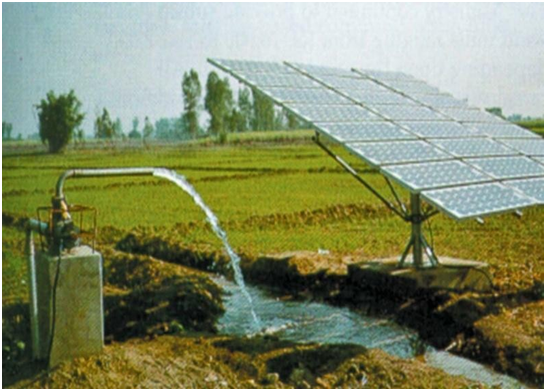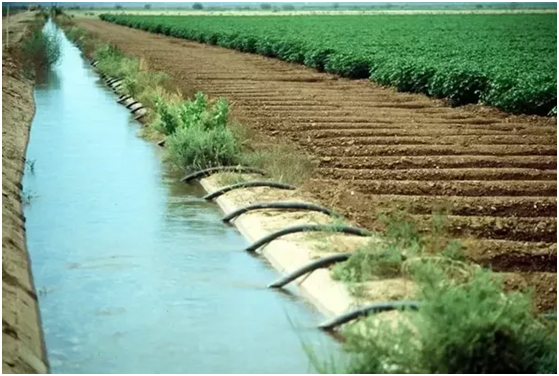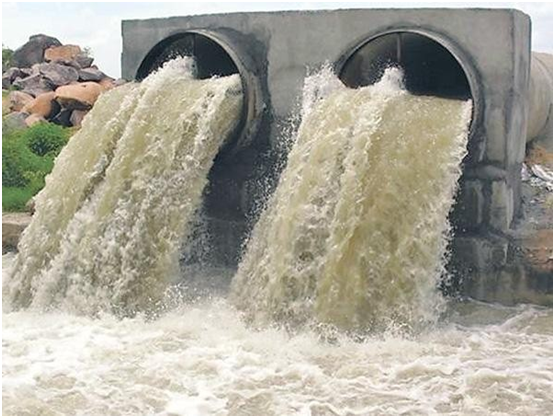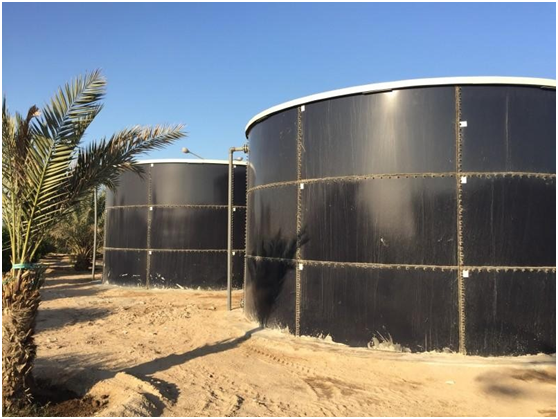1. Introduction : Agriculture
Improvement in Food Resources
Introduction
All living organisms essentially require the food to stay alive.
Food provides energy to perform various life activities and is required for growth, development and body repair.
Sources of Food:
1. Food from agriculture: Cereals, pulses, vegetables, fruits, nuts, oilseeds, condiments and spices
2. Food from animal husbandry: Dairy products like milk, curd, butter; meat, egg, fish and other sea products.
Food Revolutions in India
With the increase in population, there needed a sufficient increase in food production, so as to meet the food related demands of growing population. This led to the rise of the following food revolutions in India:
1. Green Revolution: Introduced to increase the food grain production.
2. White Revolution: Introduced to increase production of milk.
3. Blue Revolution: Introduced to enhance fish production.
4. Yellow Revolution: Introduced to increase oil production.
Different crops require different climatic conditions like temperature, moisture and photoperiods to grow well and complete their life cycle.
Two main crops are:
1. Kharif crops:
• Grown in Summer season from the month of June to October, i.e., during rainy season.
• Crops grown in this season require more water.
• Examples of Kharif season crops are: Paddy, soyabean, pigeon pea, maize, black gram, green gram and rice are kharif season crops.
2. Rabi crops:
• Grown in Winter season from the month of November to April.
• Crops grown in this season require less water.
• Examples of Rabi season crops are: Wheat, gram, peas, mustard and linseed are rabi season crops.
What are nutrients?
Plants require some nutrients in large quantities called macronutrients while some in smaller quantities known as micronutrients.
Deficiency of these nutrients inhibits the growth of plants, affects their life cycle, processes and decreases their immunity against diseases. Soil’s fertility can be increased by providing nutrients in the form of manure and fertilizers.
Nutrient management
Nutrient management refers to the efficient use of crops to improve productivity. It is necessary to balance the soil nutrient input with the crop requirement. If the nutrients are applied at the right time and in adequate quantities, optimum crop yield is obtained. If applied in huge amounts, it will harm the crop, and if applied in small quantities it limits the yield.
Manure:
• Manure contains large quantities of organic matter and also supplies small quantities of nutrients to the soil.
• Manure is prepared by the decomposition of animal excreta and plant waste.
• Manure helps in enriching soil with nutrients and organic matter and increasing soil fertility.
• On the basis of the kind of biological waste used to make manure, it can be classified into three types:
(i) Compost (ii) Vermicompost (iii) Green manure.
(i) Compost: It can be farm waste material such as livestock excreta (cow dung etc.), vegetable waste, animal refuse, domestic waste, sewage waste, straw, eradicated weeds, etc. This material is decomposed in pits and this process of decomposition is also called composting. This compost is rich in organic matter and nutrients.
(ii) Vermicompost: The compost which is made by the decomposition of plant
and animal refuse with the help of redworm is called vermicompost.
(iii) Green manure: Prior to the sowing of the crop seeds, some plants like sun hemp or guar are grown and then mulched by ploughing them into the soil. These green plants thus turn into green manure which helps in enriching the soil in nitrogen and phosphorus.
Fertilizers:
• Fertilizers are commercially produced plant nutrients.
• Fertilizers supply nitrogen, phosphorus and potassium.
• They are used to ensure good vegetative growth (leaves, branches and flowers), giving rise to healthy plants.
• Fertilizers are an important factor in the higher yields of high-cost farming.
2. Crop Production Management
Irrigation: Proper irrigation is very important for the success of crops. Ensuring that the crop gets water at the right stages during their growing season, can increase the expected yield of a crop. Different kinds of irrigation systems include wells, canals, rivers and tanks.
• Wells: These are of two types namely dug wells and tube wells.
In a dug well, water is collected from water bearing strata. Tube wells can tap water from the deeper strata. From these wells, water is lifted by pumps for irrigation.

• Canals: A canal system is a network created to move water from one source of water such as a stream or reservoir. The main canal is divided into branches that spread by through the fields so that water can be distributed everywhere.

• River lift system: In areas where canal flow is insufficient or irregular axle to inadequate reservoir release, the lift system is more rational. Water is directly drawn from the rivers for supplementing irrigation in areas close to rivers.

• Tanks: These are small storage reservoirs, which intercept and store the run-off of smaller catchment areas.

Crop Protection
When the crop is in the field, it needs protection against weeds, insect pests and other diseases.
Weed: Weeds are unwanted plants in the cultivated field. For example, Xanthium (Gokhroo), Amaranthus (Chaulai), etc.
How weeds are harmful to main crop?
• They compete for food, space, light and essential nutrients thereby reduce the growth of the main crop.
• They promote the attack by crop pests and diseases by acting as alternate host to insects and microorganisms.
• During harvesting, weeds get mixed up with crop to lower down its quality.
Methods of weed control:
Weeds can be controlled by following ways:
• Manual removal of weeds.
• Adopting cultural methods like proper bed preparation, timely sowing of crops, intercropping and crop rotation.
• Using weedicides like 2,4- D (2,4-dichlorophenoxy acetic acid), MCPA (2-methyl, 4-chlorophenoxy acetic acid), Atrazine and Butachlor.
Insect pests: Insects which destroy or damage crop plants are called insect pests.
They affect overall health of the crop and reduce yield.
They attack the plants in following three ways:
• They cut the root, stem and leaves.
• They suck the cell sap from various parts of the plants.
• They bore into the stem and fruits.
Methods of insect pests’ control:
Using pesticides: The chemical used to eliminate pests are called pesticides. They include insecticides (for killing the insects), weedicides (for killing the weeds), rodenticides (for killing rats), and fungicides (for killing the fungi).
Using natural insecticides: Like neem, nicotine, pyrethrum, etc.
Storage of Grains
In order to make the seasonal foods available throughout the year, they are stored in safe storage.
During storage, they may get destroyed and wasted by following factors:
1. Biotic factors: The include living organisms like insects, birds, mites, bacteria, fungi.
2. Abiotic factors: They include non-living environmental like moisture contents, humidity of air, improper temperature etc.
Preventive measures to be used while storage of food grains are given below:
• Drying: The harvested food grains should be dried properly before storage.
• Cleaning and maintenance of hygiene before storage: The food grains should be properly cleaned and then filled in absolutely dry and clean gunny bags before keeping in godowns, warehouses or stores.
• Regular check on godowns: Godown, warehouses and stores should be properly cleaned, dried and repaired.
• Fumigation: Those pesticides which can destroy insects by forming toxic fumes are called fumigants and process of their use is called fumigation.
Fumigants may be solid, liquid or gaseous.
Soil Fertility
Soil fertility is one of the factors necessary for the soil to be able to sustain plant growth and optimize crop yield. Fertility is a combination of essential nutrients and a soil pH level that makes these nutrients available to plants.
Effective ways to improve soil fertility
1. Organic matters
• It provides additional nutrients and food for the microorganisms that live in your soil.
• Organic matters also hold soil particles into aggregates and improve the water holding capacity of the entire soil.
2.Compost
• Organic material used to help plants grow and fertilize them.
• They are basically good for the soil and plants because it supplies nutrients as well. However, it is recommended that it is better to mix compost with fertilizers rather than using it alone.
3.Mixed Cropping
• It is a cropping pattern in which two or more crops are grown together in the same field.
• The main aim of this cropping method is to ensure some healed even if one of the crops fails to grow properly.
• The seeds of different crops are combined and planted together.
• Same fertilizers are used for all the crops.
4.Crop Rotation
• In this cropping method, different types of crops are chosen and irrigated on the same piece of land sequentially.
• The rotation of crops depends upon the soil, climate and water retention of the soil.
Activities that lead to improvement in the crop yield:
• Crop Variety Improvement
• Crop Production Improvement
• Crop Protection Management
Crop Variety Improvement
• In this approach, crops are selected on the basis of their characteristics. For instance, how well they can respond to fertilizers, can they produce high yield, how they resist diseases and so on.
Different methods of Crop Variety Improvement
1. Hybridisation - In this process, genetically different plants are crossbred.
They can be three types of crossing
• Inter varietal - Between two varieties of a plant
• Interspecific - Between two species belonging to same genus
• Inter Generic - Between species of different genus
2. Introduction of Gene - A gene that can provide the desirable characteristics to a crop are introduced in this process. As a result, we obtain genetically modified crops.
Factors on which Crop Yield Generally Depends
• The seeds used by the farmers - The seeds that are of similar variety are preferable.
• Climate or Weather Conditions - Crops that can sustain diverse climatic conditions are preferable.
• The duality of the Soil - Crops that can survive in a highly saline soil are preferable.
• Availability of Water - Crops should be grown as per the availability of water in the region.
The factors for which variety of improvement is done are:
• Higher yield: To increase the productivity of the crop per acre.
• Improved quality: The quality of crop products varies from crop to crop. E.g., the protein quality is important in pulses, oil quality in oilseeds, preserving quality in fruits and vegetables.
• Biotic and abiotic resistance: Biotic factors are the diseases, insects and nematodes while abiotic factors are the drought, salinity, waterlogging, heat, cold and frost which affect the crop productivity. Varieties resistant to these factors (stresses) can be improved to increase crop production.
• Change in maturity duration: shorter maturity period of crop reduces the cost of crop production and makes the variety economical. Uniform maturity makes the harvesting process easy and reduces losses during harvesting.
• Wider adaptability: It allows the crops to be grown under different climatic conditions in different areas.
• Desirable agronomic characteristics: It increases productivity, for example, tallness and profuse branching are desirable characters for fodder crops; while dwarfness is desired in cereals, so that less nutrients are consumed by these crops.
3. Introduction : Animal Husbandry
Animal Husbandry
In agriculture, animal husbandry is a special field that deals with rising of the livestock in a controlled, selective environment by providing them with the right care so that they can stay healthy and disease free.
There is a need to improve livestock production because the population of India is tremendously increasing. This means an increase in demand for eggs, milk and meat.
Animal husbandry includes the following:
-
- Cattle Farming
Cattle are used for two reasons –
• They provide milk
• They work as draught labour in the fields
Milch Animals: Animals that provide milk are called Milch Animals.
Draught Animals: Animals that work in the fields for irrigation, carting and tiling are called Draught Animals.
To Increase the milk production in cattle
• Milk production can be enhanced by increasing the lactation period in the cattle.
• Crossbreeding of foreign breeds and local breeds can provide cattle with qualities of increased lactation period and resistance to diseases.
• Shelters of the cattle should be kept neat and clean in order to keep the cattle healthy.
• The cattle should be kept clean and should be provided with a covered shelter that can protect them from harsh weathers.
• The floor of the shelters to be kept a dry and clean
- 2.Poultry farming
Poultry farming includes different kinds of domesticated birds. Different types of poultry are:
• Chicken
• Duck
• Goose
• Pigeon
• Turkey
It is mainly done for:
1. getting eggs through layers
2. getting chicken meat through broilers
Examples of Poultry birds:
• Indigenous breeds: Aseel, Burosa
• Foreign breeds: Leghorn, Black Minorca
Crossbreeding is a way to achieve this. Generally, foreign breeds of chicken are crossed with Indian breeds to achieve high quality. It thus has better traits such as:
• Increase in a number of chicks.
• They can tolerate high temperatures.
• They do not require much maintenance
• They can survive cheap diets
Egg and broiler production
Broiler Chicken
• They need a diet with a high quality of Vitamins A and K, proteins and fats.
• They need special care to maintain feathering and avoiding death.
• Proper hygiene and temperature conditions should be provided to the broiler chicken.
Layers
• They do not require such nutrient-rich diet.
• They just need a controlled diet.
• The layers require more space and lightning as compared to the broilers.
Disease Control methods should also be adopted against the diseases that are generally caused by bacteria, fungi and parasites in broilers and layers. Disinfectants can be sprayed regularly to avoid such diseases. Sometimes deficiency of nutrition can also need to diseases. Vaccination is a good way to protect the poultry fowl from diseases.
3.Pisciculture
Fish can be obtained in two ways:
• From Natural Resources - Capture Fishing
• From Fish Farming - Culture Fishing
Marine Fisheries
• Marine fishes are caught using fishnets and mechanical capturing techniques.
• The main source of marine fishes is marine water or salt water.
• Generally, large numbers of fishes can be captured at a time through mariculture.
Inland Fisheries
• Fishes found in lakes, ponds, lagoons and rivers are captured.
• The main source of Inland fisheries is freshwater and brackish water.
• The yield is not as high in these sources hence large numbers of fishes are captured through aquaculture.
• For Example, silver carp, common carp
Composite fish culture
• In a composite fish culture, fishes are grown along with rice crop in the paddy fields.
• In this method, a combination of 5 - 6 local as well as foreign fishes is grown in a single pond.
• Such species are selected because they have different food habits and would not compete for the food with each other.
• Some of them are surface feeders; some are middle zone feeders while others are bottom feeders.
• They would rather eat all the food in the pond.
• As a result, the fish yield in the pond increases
For Example, Catlas (surface feeders), Rohu (middle feeders), Mrigal (bottom feeders), Common Carps (bottom feeders), Grass Craps (aquatic weed eaters) are often grown together in composite fish culture.
4.Apiculture
Bee farming is performed in bee farms or apiaries. Many farmers perform beekeeping as a means of generating additional income because:
• Honey is a widely used product
• Bee farming is not very expensive
• They also generate wax along with honey
Bees used for commercial and honey production
• Apis Cerana Indica - Indian bee
• A. Dorsata - The rock bee
• A. Florae - The little bee
• A. Mellifera – Italian variety of bee
Why Italian bees are popular in Bee farming?
• They produce large amounts of honey.
• They do not sting much.
• The breeding period in Italian bees is long.
Factors that determine the quality of honey
• Along with the choice of selection of the bee species, the flowers decide the quality, quantity and taste of the honey produced.
• There should also be enough pasturage or availability of flowers to the bees so that they can collect enough nectar and pollen.

 Vaishnav Publication
Vaishnav Publication
